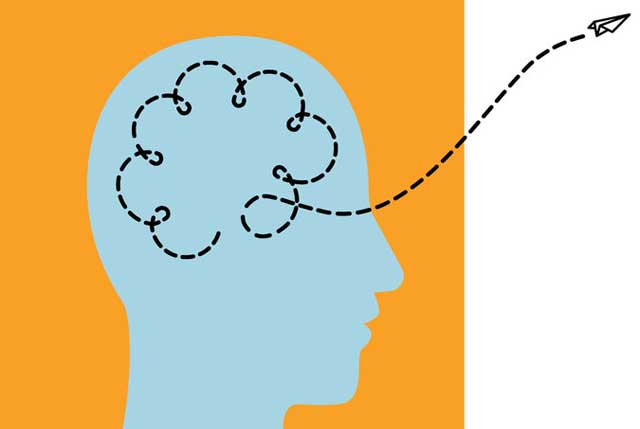Many of us to our best thinking in the shower – one of the few moments of modern life when we are basically starring at a wall, with no tasks, to do lists or exterior stimuli. Psychology is now taking its direction to a completely new, modern ground. Researchers are now debating on mind-wandering and mindfulness, two very blurry concepts people are trying more and more to integrate into their busy, smelly dirty modern lives.
Mind-wandering
New research suggests that mind-wandering can serve important functions for our performance and well-being. On the other side, some of them clearly illustrate the health benefits of mindfulness.
When we shift from one task or activity to another, we often try to focus our attention by sheer force of will. I often find myself turning on Netflix just to have background noise while cooking and surfing Facebook. That’s 100% mind wandering, studies say, More than that, I sometimes turn on Netflix because I feel too alone in my house, and the image of myself scrolling alone in the dark creeps me out. And this goes on and on from 7 o’clock in the morning, during shitty work tasks and finishing with the above Netflix sad scene. But if every moment of every day is full of stimuli demanding attention, it becomes increasingly hard to decide what requires conscious awareness.
Mind-wandering can make you more creative, says this study and it stimulates creativity, particularly “divergent thinking,” or being able to come up with novel ideas. Letting your mind go, though, is a different think from multitasking and procrastination. Mind wandering should describe the process that happens for example in the shower – 0 external stimuli. Mind-wandering seems to involve the default network of the brain, which is known to be active when we are not engaged directly in tasks and is also related to creativity.
In order to solve the problem of identifying the moment our minds shift from an active thinking mode, called conscious mode, to the mind wandering mode, some researches suggest bringing back our minds into a state of mindfulness, in order to get back on track and diminish mind wandering, procrastination and multitasking.
Mindfulness
Humans spend about half of their waking hours thinking about something other than what they’re actually doing in the present. Mindfulness is the basic human ability to be fully present, aware of where we are and what we’re doing, and not overly reactive or overwhelmed by what’s going on around us. So kinda the opposite of mind wandering. Contrary to mind-wandering, mindfulness definitely has very good health benefits. The goal of mindfulness is to wake up to the inner workings of our mental, emotional, and physical processes.
Modern technology rarely allows us to be alone with our thoughts. So what’s the right thing to do with our minds? A recent review of academic literature related to mind wandering posits that “These self-generated thoughts — e.g., mind wandering or daydreaming…allows consciousness freedom from the here and now and so reflects a key evolutionary adaptation for the mind.”
On the other side, mindfulness brings our minds in a conscious state. Where do these two concepts meet and how do I know when to make the switch? In order to notice that the mind has wandered, and be able to return it to attention, there must be something bigger than that mind, a wider perspective that can observe the distraction. That wider perspective is awareness.
We’re called back to awareness when we notice the mind has wandered. Every noticing and every coming back inevitably happens in awareness. From this perspective, mind wandering isn’t a problem—indeed, noticing it means we’re starting to see our habitual patterns of perception more clearly.






